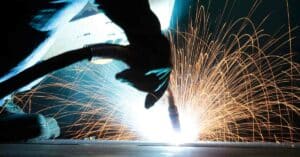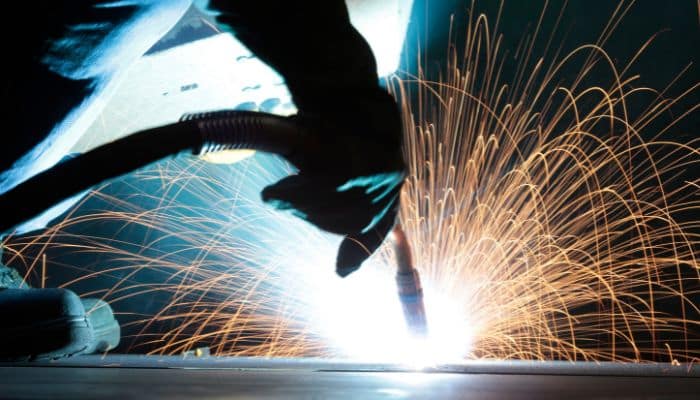
IBF Deal Done: 250,000 Seafarers Pay Boosted By 6%
September 26, 2023
Samsung Heavy Acquires Integrated International Certification For Compliance Management System
September 26, 2023
– Membrane panel welding speed 5 times ↑… Improved LNG cargo hold production efficiency
– expected to be expanded to liquefied hydrogen cargo holds in the future
□ Samsung Heavy Industries announced on the 21st that it had developed the industry’s first ‘laser high-speed welding robot’ that dramatically improved the speed of joining membrane panels in the cargo hold of LNG carriers.

The laser high-speed welding robot developed this time is up to five times faster than the existing plasma arc welding (PAW) method, and is expected to greatly increase the drying and production efficiency of LNG carriers.
□ The drying process of an LNG cargo hold largely consists of installing insulation and constructing a membrane. Among these, the construction of membrane panels that come in direct contact with cryogenic liquefied natural gas is difficult and time-consuming as most of the work involves high-level welding work.
※ The welding length of the membrane panels of the four cargo holds mounted on one 174,000㎥ class LNG carrier reaches 60km, equivalent to the straight line distance from Seoul to Pyeongtaek.
□ In the industry, it is difficult to secure skilled welding personnel and PAW has limitations in improving productivity, so the development of new welding technology has been required.
Accordingly, Samsung Heavy Industries’ Production Technology Research Center has been developing a high-speed welding robot optimized for membrane cargo holds by applying the technical characteristics of laser welding since 2021.
□ The ‘laser high-speed welding robot’ can create a wide bead width through △Wobble, which rotates the laser beam at a constant interval and speed, △Defocusing, which changes the focus position, and △ It has a built-in laser displacement sensor that can automatically find even curved welding positions.
When welding a 2-meter-long membrane panel, PAW takes about 5 minutes, while laser welding is fast enough to be completed in just 1 minute, emerging as an innovative technology that will dramatically increase the productivity of the LNG cargo hold process.
□ Samsung Heavy Industries successfully completed a test of applying a laser high-speed welding robot to the Korean LNG cargo hold (KC-2C) last month, and received final approval for use from the ordering party after completing the application test to France’s GTT’s LNG cargo hold (MK-Ⅲ) within the year. It is planned to be applied to production in earnest.
□ Choi Doo-jin, head of the Production Technology Research Center at Samsung Heavy Industries, said, “Laser high-speed welding robots will be a key technology that can maintain overwhelming competitiveness in cargo hold construction, a core process for LNG carriers,” and added, “We plan to expand its application to cargo holds for cryogenic liquefied hydrogen carriers in the future.” “He added.
Press Release
Samsung Heavy Industries Develops The Industry’s First ‘Laser High-Speed Welding Robot’ appeared first on Marine Insight – The Maritime Industry Guide
Source: Maritime Shipping News


